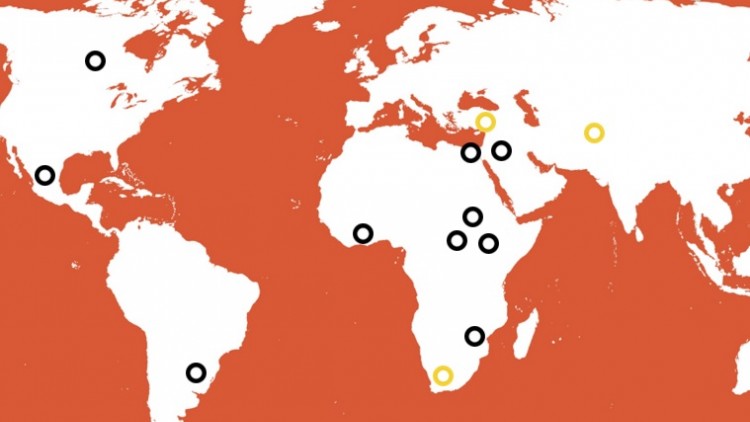Safer Access for all National Societies
Many National Red Cross and Red Crescent Societies are facing new, shifting and increasingly complex challenges in the often sensitive and insecure contexts in which they work.
Where National Red Cross and Red Crescent Societies respond in sensitive or dangerous environments, such as during armed conflict or internal disturbances or tensions, they face complex and evolving challenges. Weapon bearers sometimes prevent them from providing humanitarian services, or hinder or challenge them when they do.
And in some places, their personnel, facilities and equipment are attacked repeatedly. As a result, the people who need assistance the most may be deprived of it or even suffer direct harm.
These concerns prompted National Societies, working closely with the ICRC, to seek ways to increase their acceptance, security and access to people and communities in need. The result was the Safer Access Framework (SAF), first developed in 2003 and updated regularly based on the experiences of National Societies.
It contains a set of actions and measures, grounded in the Fundamental Principles of the International Red Cross and Red Crescent Movement and other Movement policies, that a National Society can take when responding in sensitive and dangerous environments.
While there is no full guarantee of safety or security when providing humanitarian assistance and protection, over time and with experience, National Societies have found that taking the actions and measures recommended in the SAF can help mitigate the risks they face considerably.
In addition, there is now a Safer Access Practical Resource Pack, which was developed after National Societies expressed a desire at the 2009 Council of Delegates for a resource providing practical guidance on how to prepare for and respond more effectively in conflict.
To develop it, the ICRC drew on its own experience and that of some 50 National Societies and their Federation. The materials it contains were created with and for all National Societies and seek to improve the way they conduct their humanitarian activities and prepare for and respond to needs in challenging circumstances.
Information on the SAF and related tools can be found on the ICRC's website, the Safer Access website, and in the FedNet toolbox.
What is the SAF?
The Safer Access Framework (SAF) is divided into eight sections (called elements) containing actions and measures that a National Society can take, based on the priorities in its working environment, to increase its acceptance, security and access to communities in need.
They are: context and risk assessment, legal and policy base, acceptance of the organization, acceptance of the individual, identification, internal communication and coordination, external communication and coordination, and operational security risk management. They are like links in a chain: interconnected and interdependent.
The SAF is underpinned by the Safer Access Cycle – access, perception, acceptance, and security – and reinforced through the concrete use of the Fundamental Principles, which guide how the different elements are put into operation as well as the delivery of services and decision-making.
SAF and National Society development
The role of National Societies is to respond safely, effectively and in a principled manner in their country, and doing so is central to meeting increasing humanitarian needs, particularly in conflict and other sensitive and dangerous environments. National Societies are the only component of the Movement organized to provide services to vulnerable people in their own countries before, during and after a crisis.
The ICRC recognizes the importance of National Society development in delivering a more relevant and sustainable humanitarian response. The SAF is the foundation of the ICRC's contribution to National Society development. ICRC contributions to National Society development are implemented in coordination with the International Federation of Red Cross and Red Crescent Societies.
The SAF and its approach and tools are intended to complement National Societies' other strengthening, development, and emergency preparedness and response activities. National Societies own the Safer Access Framework and any Movement component can support National Societies' efforts to strengthen and increase safe access.
SAF and COVID-19
The Safer Access Framework is put into operation differently depending on the context; it is meant to be adapted and unpacked based on both contextual and operational developments in the field.
The COVID-19 pandemic was an opportunity for many National Societies to successfully apply and strengthen the SAF: (i) National Societies' familiarity with the SAF helped them to structure their COVID 19 response plans (ii) those plans, in turn, helped fulfill ongoing SAF-related commitments within/with National Societies, and (iii) the role that National Societies played in responding to the pandemic opened up possibilities to connect SAF with reflection on longer-term National Society development.



